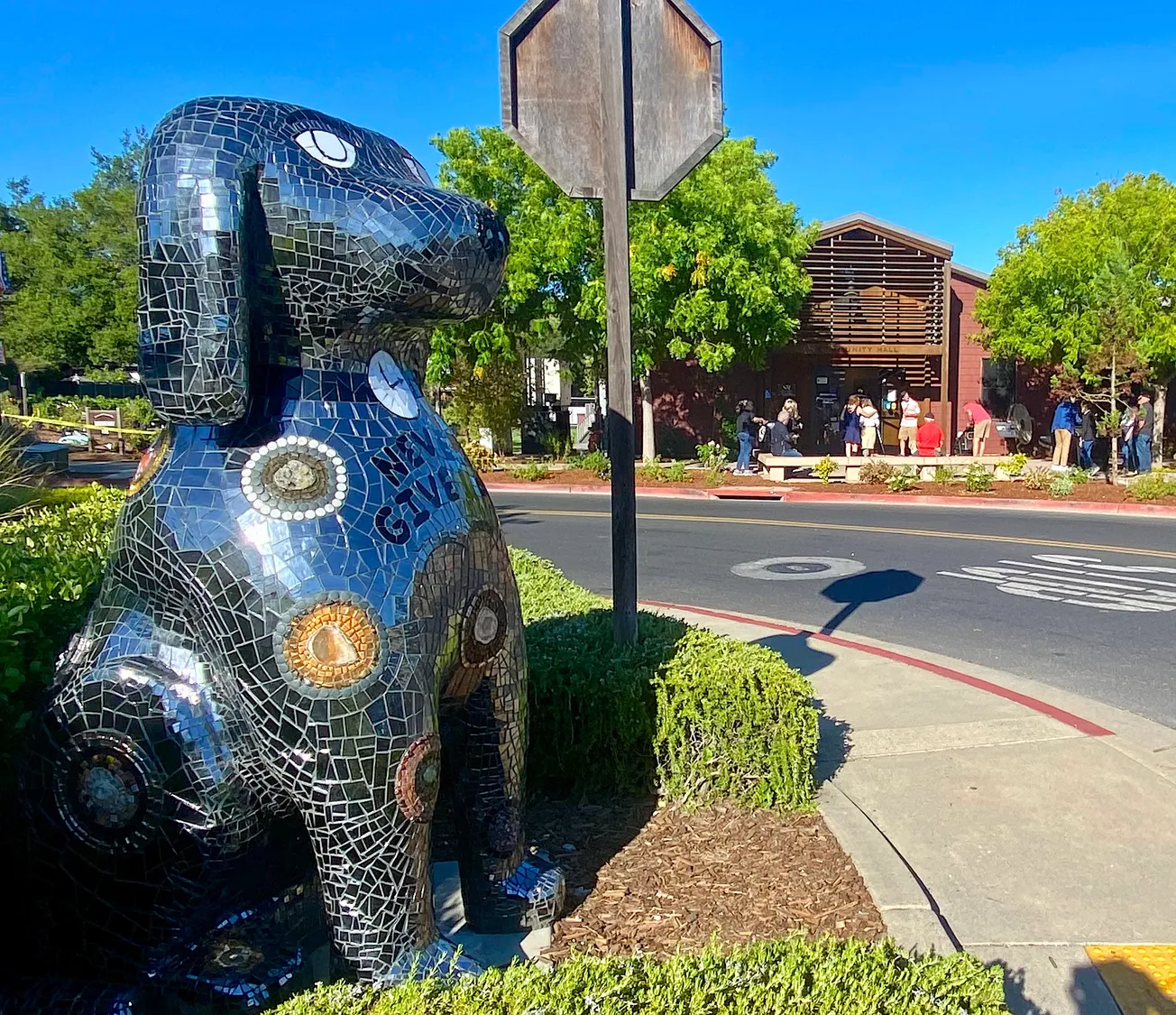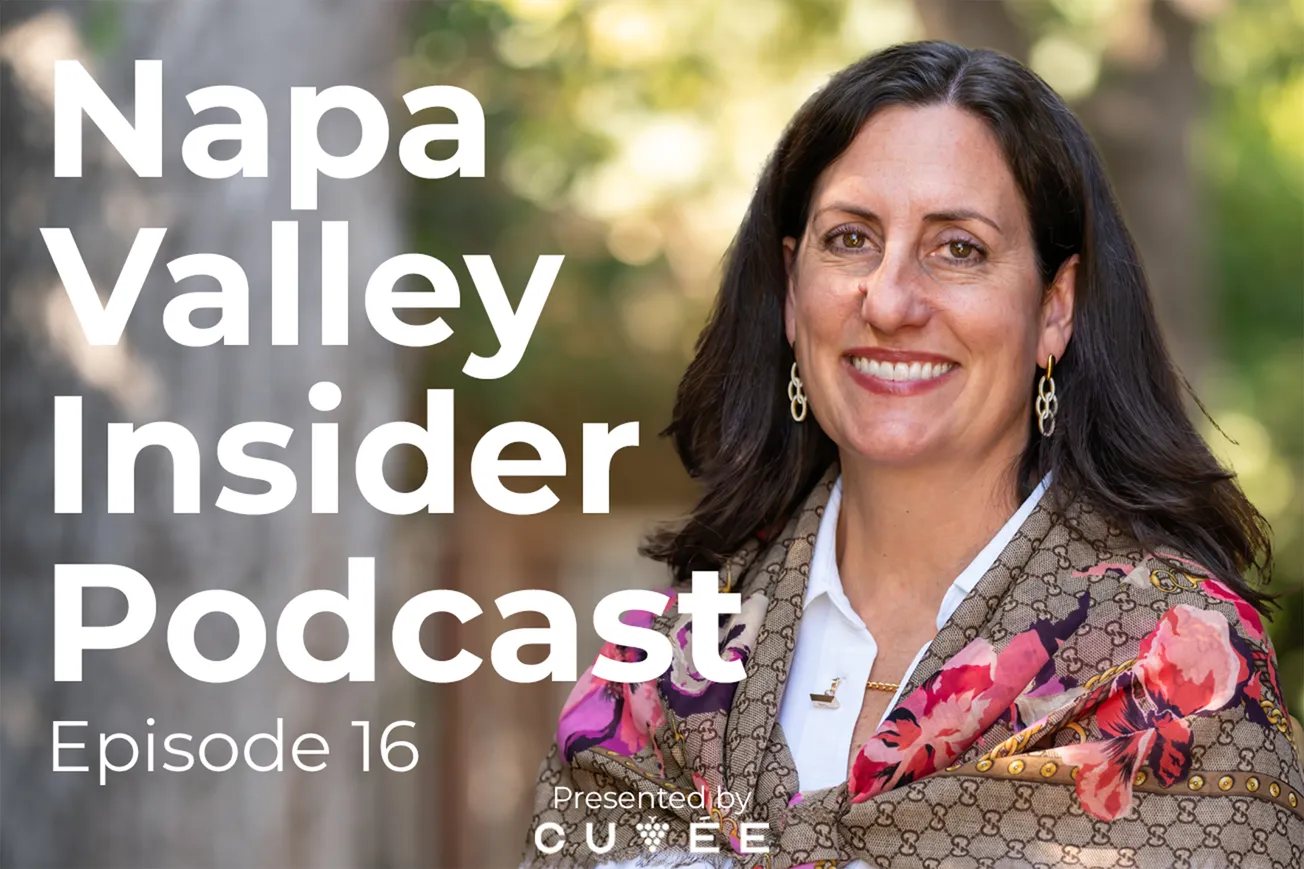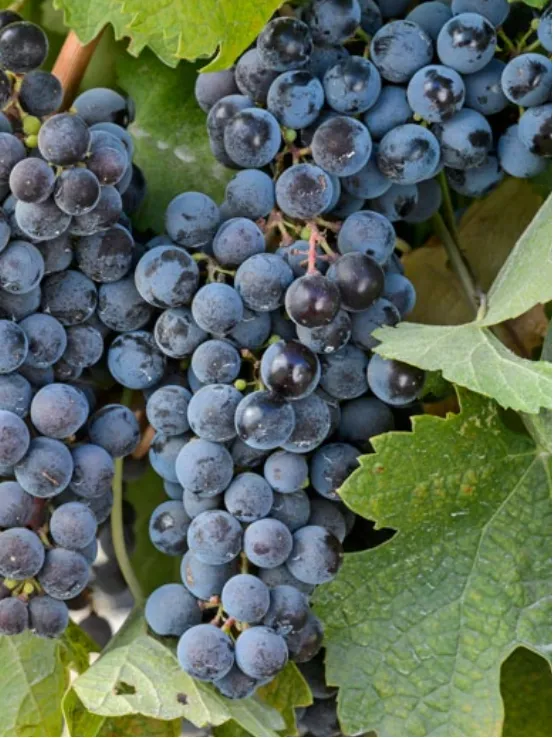Rumor has it that it was love at first sight for Rocky the Watch Dog and the Yountville Art Walk.
Rocky’s maker, Laguna Beach sculptor Elizabeth Laul Healey had never even heard of Yountville until, while planning a recent drive to the Bay Area to make a delivery, her husband mentioned that he had gone to high school with the town’s manager, Brad Raulston.
Reaching out, the Healeys learned Raulston would be away on vacation when they came through Yountville, but he had arranged for them to meet Parks and Recreation Department director Samantha Holland for a tour of town and the Art Walk.
“I was amazed,” Laul Healy said during a celebration of Rocky’s installation held last week at the Yountville Community Center. “I had no idea this [Art Walk] existed, and then to see it and see how well done it is. I was sold.”
Holland said she felt the same way when she saw the piece the Healy’s were delivering to a Healdsburg collector – another giant fiberglass mosaic dog statue – and knew it would be a great fit for Yountville.
Rocky is just the latest sculpture to inhabit one of Yountville Art Walk’s 39 spaces that extend along the Washington Street corridor from Veterans Park in the south to Community Park just over a mile north.
Sculptures along the route shift in nature and form; color and meaning, but taken as a whole, they create one singular artistic attraction worth seeing over and over again.
Given that these eclectic works of art wend their way through the heart of Yountville and its world-class restaurants, wine tasting rooms and resorts, it’s hard to imagine a more appealing alignment.
Launched 15 years ago by then-Town Manager Steve Rogers and an informal art committee chaired by Kim Cook, today’s Art Walk has grown in size and stature, according to those who were here and involved.
“I think the growth has been amazing. But also, the quality of the art over the years,” said Holland, who joined the town staff shortly after the Art Walk had been started with five Gordon Heuther sculptures that the Napa artist supplied.
“From there, it has just continued to evolve so much that we have artists reaching out to us now about participating,” she said.
Many of those involved with the Yountville Art Walk, including Holland, credit its more recent successes to Ronda Schaer, a member of the town’s Arts Commission and chair of its Art Walk subcommittee.
“She just has a great eye – not only for the pieces themselves but for where and how she places each one,” said Arts Commission member Cynthia Kapjian, who helps maintain the online audio tour, which can be accessed using a QR code at the base of each sculpture on the walk. “You know, you can’t just put them anywhere, and there are a lot of considerations to made when deciding where each one goes.”
With a degree in industrial design, Schaer cultivated a career working for a large Northern California home builder. It spanned titles that started with director of marketing and ended with vice president of sales and marketing, responsible for, among other things, all stages of a model home complex development – from construction to interior design to marketing strategy.
In the background, art had always been a part of her life, she said, having grown up with a family who appreciated it in all its forms.
Feeling tired and overworked, she left the pressures of the building industry and turned to art “to provide a financial reward for me that I enjoyed in an environment I liked.”
In 1990 she opened RASberry’s Art Glass Gallery in what is now Edward James Plaza. It morphed into RASgalleries Art Glass, alongside a second gallery, RAKU Ceramics Gallery.
“It’s like the town of Yountville has its own gallerist and its own art curator,” said Noel Resnick, also a member of the Arts Commission as well as chair of the Yountville Chamber of Commerce Board of Directors. “She has relationships with everyone under the sun that she just manages so well.”
Schaer, however, credits a great team for creating and growing the Art Walk over time.
“We all work together for the Art Walk. Me, our commissioners, Samantha [Holland], Public Works,” she said. “If it were not for Steve [Rogers] and the support of the mayor and town council there would never have been a Yountville Arts serving the Community and that is true to this day, 15 years later. We exist to do the work in the arts we enjoy because we have the support of those in Town Hall and our community.”
At the forefront of her work with the Art Walk, Schaer said, is the Arts Commission’s mission statement, which is “To provide vision, leadership, inspiration and support for artists and their art in Yountville, creating a bridge that links artists, community, visitors, business and government.”
Resnick said Schaer’s involvement in the broader arts world as well as her negotiating skills are an “integral part of the marketing we do.”
That marketing involves getting the word out about the Art Walk through all the typical channels, said Resnick, inviting people to visit the town and take it all in.
“Tourism is changing, and people, for various reasons, are looking for more of an ‘experience,’ she said. “So just as food and wine is always something that is so special here in this town, with our with our Michelin star restaurants and our beautiful tasting rooms, our goal has been to elevate awareness of the arts so you could have an even more complete experience when you come to town.
“The goal for Yountville has always been, you come here, you park your car, you stay here. You don’t have to go anyplace else,” Resnick added. “And part of that now has become the arts, and particularly our Art Walk.”
Speaking to the effect of the Art Walk on Yountville’s business district as well as the community as whole, Resnick said, “It definitely has an economic impact in town, because it’s another reason to get people to come to Yountville – to not only have a meal, to not only taste wines, but to also stroll up and down Washington and enjoy the art, right?”
The attraction also has an economic impact on the artists and on the Arts Commission. Many of the sculptures in the Art Walk are available for purchase, and the town receives a 20 percent commission on each sale. That money is revenue that the Arts Commission uses to support the many other projects and programs it administers, like several art shows a year in the Steve Rogers Gallery at Community Hall and the Art, Sip n’ Stroll, a large outdoor artist market and wine tasting held each May.
The artists whose sculptures are installed as part of the Art Walk receive a $2,500 stipend from Yountville Arts. According to Schaer, who travels at her own expense to far reaching places to view sculptures and meet artists, this is much lower than most sculptors receive elsewhere, but often when they learn about Yountville and see the Art Walk, they will make an exception – as did Rocky’s creator Laul Healey.
The stipend guarantees that the sculpture will remain in town for two years, or until it is sold.
The sculptures, comprised of all types of metals, glass and other materials, range in price from $7,500 on the low end to nearly $100,000 (hello Rocky).
Prospective buyers can access the price of each artwork on the walk by using its accompanying QR code or by accessing the online catalog on the Town of Yountville webpage devoted to the Art Walk.
“I think it’s enticing to artists. Because although, yes, they like their work being seen, it’s also something they do to make money to support themselves,” said Holland. “So whether it’s the sculpture here that gets sold or whether it’s just creating, you know, business opportunities for them, I think they see the value in that.”
In addition to all the economic benefits of the Art Walk, said Resnick, there are many others, including adding aesthetic value to public spaces, increasing recreational opportunities and inspiring people to think more deeply about their community.
According to the Amherst, Massachusetts Public Art Commission, “Public art adds enormous value to the cultural, aesthetic and economic vitality of a community. It is now a well-accepted principle of urban design that public art contributes to a community’s identity, fosters community pride and a sense of belonging, and enhances the quality of life for its residents and visitors.”





